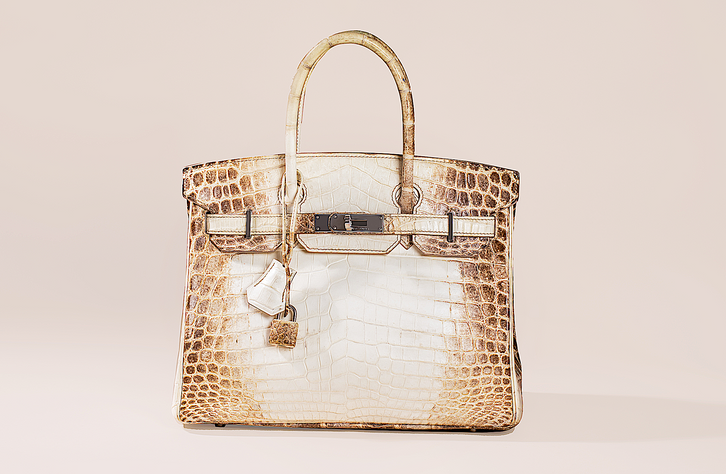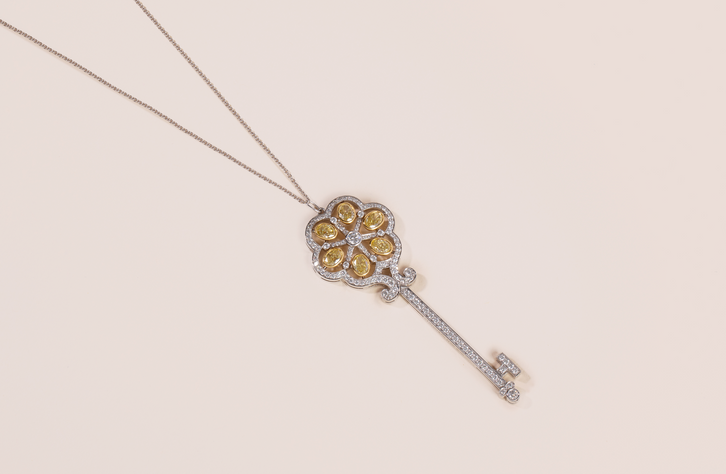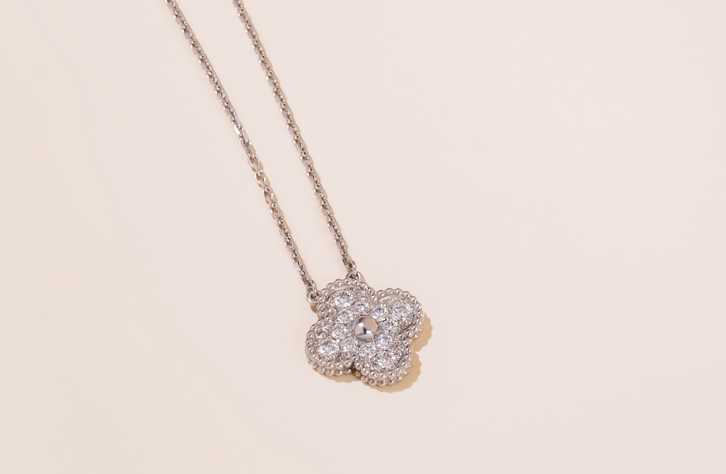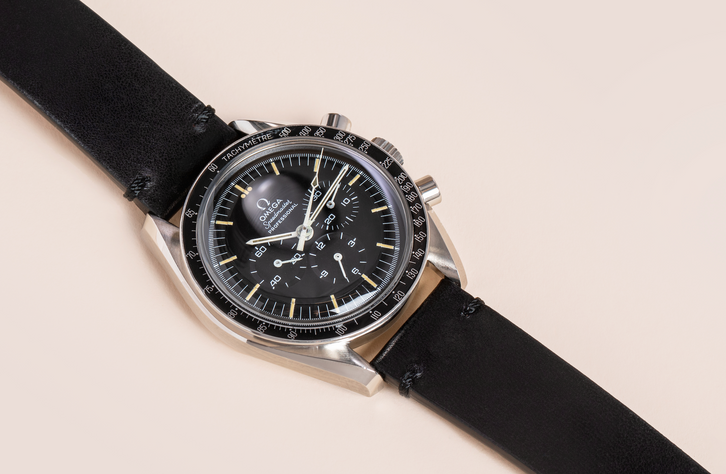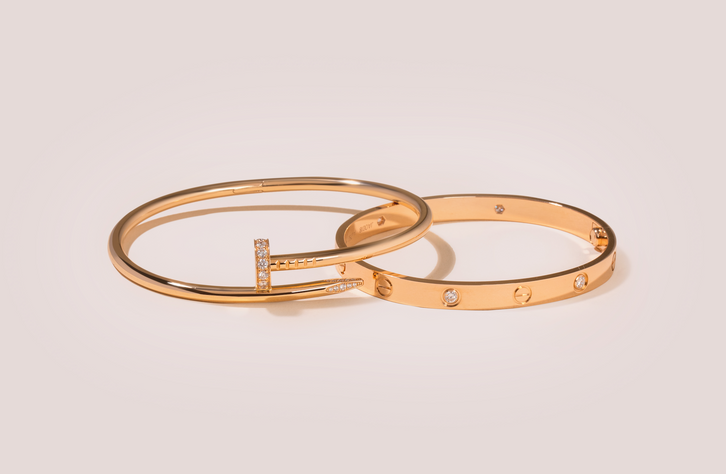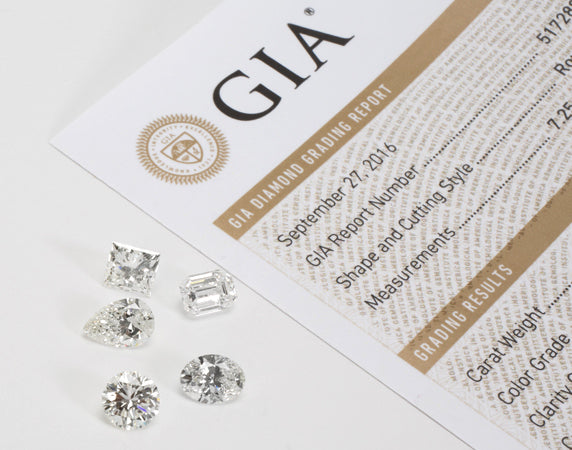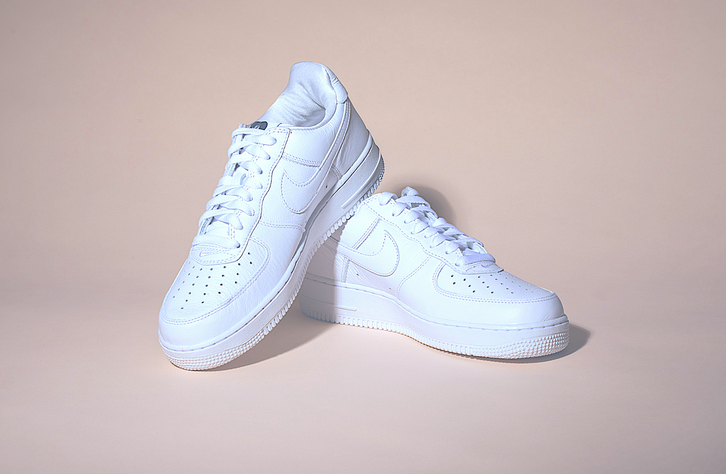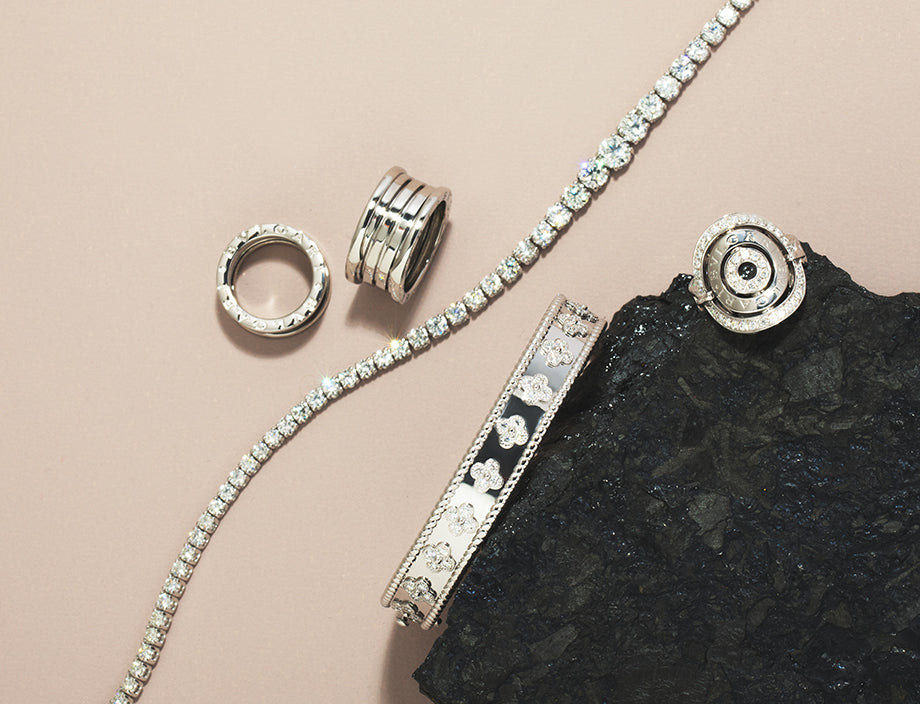In this article, we will answer the following questions about diamond clarity:
- What is diamond clarity?
- Diamond clarity chart
- How will diamond clarity affect my diamond’s value?
- What types of inclusions exist?
- How do I determine my diamond’s clarity?
What Is Diamond Clarity?
Definition: Diamond clarity refers to how flawless a diamond is.
The size, amount, and appearance of inclusions (flaws within the diamond) and blemishes (flaws on the surface of the diamond) will determine your diamond’s clarity grade. Along with color, cut, and carat weight, clarity is one of the 4 C’s used to determine diamond quality. Clarity can have a significant impact on the appearance and value of your stone.
Diamond Clarity Chart
Diamonds are given a clarity ranking based on the amount, size, and position of inclusions and blemishes. Most diamonds have some imperfections, but the nature of these imperfections will determine your diamond’s clarity grading. The GIA, the industry’s leading organization, ranks diamond clarity as follows.
| Clarity Grade | Meaning | Description |
| FL | Flawless | No internal or external flaws. Incredibly rare and valuable. |
| IF | Internally Flawless | No internal flaws but some surface flaws. Still very rare and valuable. |
| VVS1, VVS2 | Very Very Slightly Included | Slight internal flaws that are difficult to see even with 10x magnification. |
| VS1, VS2 | Very Slightly Included | Slight internal flaws that are just barely visible with 10x magnification. Flaws are typically not visible with the naked eye. |
| SI1, SI2 | Slightly Included | Slight internal flaws that are visible with 10x magnification. Flaws may be visible to the naked eye. |
| I1, I2, I3 | Included | Inclusions that are readily visible to the naked eye. Inclusions may affect transparency and brilliance. Less desired. |
How Will Diamond Clarity Affect A Diamond's Value?
If you are looking to sell your diamond, you may be concerned with how your diamond’s clarity grading will affect its value. Diamonds are ranked from FL to I3, with FL being the most rare and valuable and I3 being less rare and less valuable. The bottom line is: the more flawless your diamond, the more it is worth.

As diamonds’ clarity grade decreases, price often drops dramatically. Below is a real-world example of how clarity grade affects the price of a diamond. The following table shows price differences based on clarity grade between otherwise identical 1-carat diamonds:
| Clarity Grade | Price Per Carat | % Drop in Price From Next Highest Grade |
| IF | $8000 | |
| VVS1 | $7100 | 13% |
| VVS2 | $6500 | 9% |
| VS1 | $6200 | 5% |
| VS2 | $5500 | 13% |
| SI1 | $4800 | 15% |
| SI2 | $3700 | 30% |
| I1 | $3200 | 16% |
| I2 | $2400 | 33% |
With larger stones, the price differences between identical diamonds of different clarity grades increases even more significantly.
If you would like to determine how much your diamond is worth or are interested in selling your piece, fill out the online form and one of our in-house diamond experts will be in touch shortly with an initial price quote. myGemma offers a quick, secure service for selling your diamonds, designer jewelry, and luxury watches.
What Are The Different Types Of Diamond Inclusions?
While there are many different types of inclusions, common imperfections include:
- Feather – internal crack, created during or after formation; can affect diamond’s durability
- Pinpoint – a tiny mineral crystal within the diamond that will appear as a very small dot
- Crystal – a crystal contained within the diamond
- Needle – a thin, elongated crystal within the diamond that will appear as a rod shape
- Cloud – a cluster of pinpoints that are hard to distinguish from one another; creates a hazy appearance
- Twinning Wisp – formed as a result of growth defects in the diamond; when a diamond stops formation and starts again at a later time, this inclusion will occur; appears as a group of feathers, pinpoints, crystals, and clouds
How Do I Determine My Diamond's Clarity Grade?
You may be wondering: What types of inclusions does my diamond have? What is my diamond’s clarity grade? Papers or certificates about your stone may be able to tell you this information. GIA reports include the clarity grade and are always considered extremely reliable in the accuracy of their grading.
If you are unable to find any paperwork regarding your stone or are not sure about the accuracy of the information you do have, a local jeweler should be able to give you an approximate idea of the clarity grade free of charge.
Once you have the clarity grade, color grade and carat weight, our in-house diamond specialists are on-hand to provide a price quote. Fill out the online form and one of our team members will be in touch shortly with a price quote.









